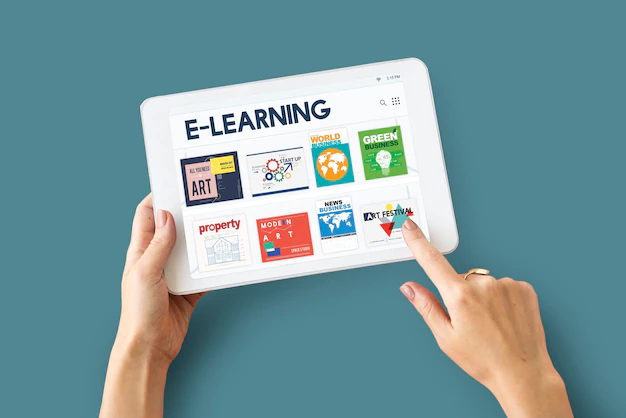E-Learning Course Design: 12 Disasters To Avoid

E-Learning Course Design – Being distracted can make online learning less effective and less enjoyable for students. The issue is that it is not easy to recognize distractions.
Nobody would purposely add something to an online course that would take away your focus. Many times, the thing that distracts us has good intentions but is not helpful in the end.
To make sure learning is not disturbed, try to avoid or decrease the impact of these distractions.
Read: Best 6 Ways To Infuse Discovery Learning Into Your eLearning Course Design
E-Learning Course Design Disasters To Avoid
1. Controversial Images
Pictures are also a significant part of online courses, but it is necessary to be cautious when using images that could cause disagreement.
The most effective way is to think about the experiences, places, and feelings of all the students who will finish your class. If you’re not sure about a picture, it’s usually better to replace it or not include it at all.
2. Difficult Texts To Read
Difficult text makes it harder for learners to understand and takes away from their learning. There are some types of text that are difficult to read.
You should avoid using unclear and unusual fonts, big chunks of text, and text that is hard to read because the color doesn’t contrast well with the background.
3. Videos on Autoplay
Using videos in learning can be helpful, but it can also be distracting if they start playing on their own. Auto-playing videos can be especially disruptive if the person learning is in a place or situation where they don’t want sound to be heard.
It is best to let students decide when to watch videos. They should also be able to stop, go back, and forward as well as control the volume.
4. Background Music
Some people enjoy listening to music while learning and working, but whether it helps or not is different for each person.
The kind of music that is played in the background depends on personal preference. Most importantly, having music in the background doesn’t help with learning and it’s not clear if it helps with the learning experience. So, it’s better to stay away from it.
5. Insignificant External Links
External links in e-learning courses can be helpful, especially if they provide more information or help explain the topic better. But, always remember that if you click on a link, it will take you away from the course and the stuff you’re supposed to learn.
External links are distractions, so think about the consequences before putting them in. It is a good idea to think about where to put the links. Usually, it is less distracting to put them at the end of the e-learning course.
6. Navigation Overload
Basic features are very important in online learning courses, but it is possible to have too many buttons, links, and choices. The easiest way to move around an e-learning course is when it is designed in a straightforward and easy-to-understand manner, allowing learners to easily find their way without even realizing it. Instead of thinking about where to go, they simply move through the course without any problems.
7. Excessive Graphics
Graphs are a tool that can help us learn and make learning better. However, like other things on this list, it is possible to use too many graphs, which can be distracting.
It is still important to use graphs when it is suitable, but make sure you change the information as much as possible and do not include too many.
8. Design Inconsistencies
The way your e-learning course looks and feels is important for both your learning and branding.
When you are designing something, it is very important to make sure that everything looks and feels the same on every page, part, and piece of content.
Having consistency in your e-learning course is beneficial because it improves the overall appearance and professionalism.
The opposite of having a well-planned design can be very distracting for learners and can make the course less effective.
9. Insignificant Videos
Videos are really important in e-learning. Sometimes, it might seem like a good idea to add a video just because, without thinking about how it will actually help people learn.
The issue is that videos that are not related or helpful for learning will only distract people trying to learn. It’s better to not have any videos in your online course at all than to include one that will distract you.
10. Complicated Metaphors
Metaphors can make complicated ideas easier to understand by using familiar examples. But, complicated metaphors have the opposite effect.
Instead of the student understanding the metaphor easily, they have to spend time trying to figure out what it actually means. This is something that takes your attention away from learning, so we should not use complicated comparisons.
11. GIFs
In certain situations, GIFs can be used to share information in a fun and entertaining way. However, there are also dangers or potential problems when using GIFs, especially in a learning environment online. GIFs might not look professional for the course and we can’t be sure how people will react to a particular GIF. Therefore, it is best to not use GIFs in e-learning courses.
12. Avoid the Distractions
Different things distract different people. This makes it difficult to make sure your e-learning courses don’t have things that distract people.
This list is a helpful place to begin. When you create content and e-learning courses, it’s important to focus on continuous learning. If something could make learning slower or distract some learners, it’s better to not include it.







